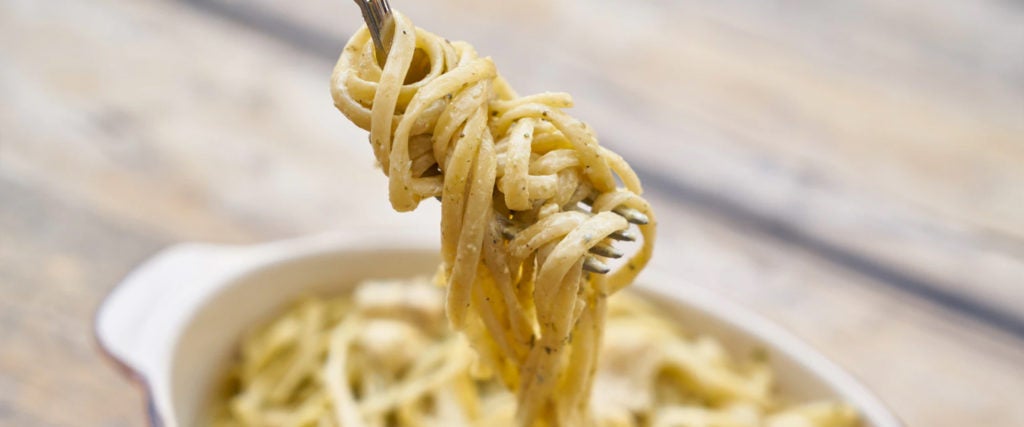Behind maybe pizza, the cheeseburger and possibly fried chicken, no foodstuff is as universally beloved by humanity as pasta. Those luscious strands of flour, water and egg, that hearty sauce of [insert your favorite sauce here] — there’s a reason why many kids in America dine on spaghetti and spaghetti alone for much of their young lives.
But like all things that taste great in this world, when something’s delicious, it’s typically too good to be true. And, pasta’s rep is exactly that: It’s not good for you.
Pasta, you see, is mainly made up of carbohydrates — i.e., sugars, starches and fibers — and carbs are what make us all overweight and unhealthy. And so, many people limit the amount of pasta they eat, thinking that by avoiding Italy’s national dish, they’ll stay in better shape.
But is that assumption true?
“There’s really no reason to ‘avoid’ pasta,” says Dana Hunnes, senior dietitian at the Ronald Reagan UCLA Medical Center. “It can make a healthy dish.”
WHAT — how is that possible? Haven’t we been taught to avoid carb-heavy foods?
“I’d say that, as long as you’re not eating pasta at every single meal of every single day of the week, it’s okay,” Hunnes argues. “Add vegetables, though: Roasted vegetables, or other fiber-containing foods to the meal, as well. But there’s nothing, from a dietary standpoint, wrong with pasta — we all need carbohydrates for our brains to function properly. After all, our brains use 8 grams of glucose every hour.”
Hunnes says that red sauces — like the one your nonna makes — with their additional fiber and lycopene, are a good choice to top your pasta, but that pestos (she recommends vegan pesto with nutritional yeast instead of parmesan — sorry purists) are high in antioxidants from the basil, too. Just avoid white sauces, like in cacio e pepe and alfredo, because they’re mainly salt and fat with little added nutrients. Hunnes also recommends whole wheat, bean or legume-based pastas over traditional refined-flour pasta, because they’ll typically have more fiber, and are often organic, which means they’ll have fewer pesticide and fertilizer residues.
But let’s get down to brass tacks: How often, really, can you eat pasta? Once a week? Twice a week?? Three times a week?!?
“You could, reasonably, eat pasta once daily — though I would limit your servings to around 4 ounces of raw pasta — probably around 2 cups cooked — at any one time,” advises Hunnes.
Mamma mia, that’s a lotta pasta! *Chef’s kiss*

